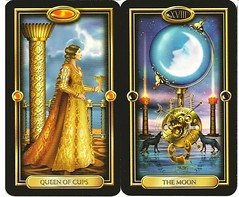A Brief Saga to Tarot Cards and Reading Tarot Cards
The history of the Tarot is something that is buried by time. There are some remarks and historians that correlate the introduction of the Tarot with that of older Egypt, while other analysts and investigators signify that the Tarot shares descent with aged gypsy cultures. Still, there are additional researchers that designate an Italian introduction to the Tarot cards, and it is presumed that the Tarot Cards evolved into a tool of divination right around the 1400s. Since that time, hundreds of different decks show grown and are today in use. One of the most well-liked decks being the Rider-Waite deck.
Tarot cards are separated into five divisions: The Major Arcana, The Suit of Wands, The Suit of Coins, The Suit of Cups, and the Suit of Swords. Each card in The Major Arcana has an equivalent face card for every following suit.
The suits themselves demonstrate divisions as well. Their interpretations and worth are determined by their statuses as Oudlers/Trulls, Kings, Queens, Cavaliers, Jacks, and Others. Oudlers generally show the same point and value as Kings, while the rest from Queens to Jacks are worth one point less than their predecessors.
More than the value of cards, the English-speaking world gives significantly more value to the interpretations of the cards.
Tarot card meanings are generally changing – and they show also changed drastically through time. In the up-to-the-minute era, howbeit, there are common interpretations for cards. Minor arcana cards, for example, carry with them a widely astrological meaning that varies depending on the time of year. The court cards, on the additional hand, talk of variant populace. Their nature as is usual talks about the
